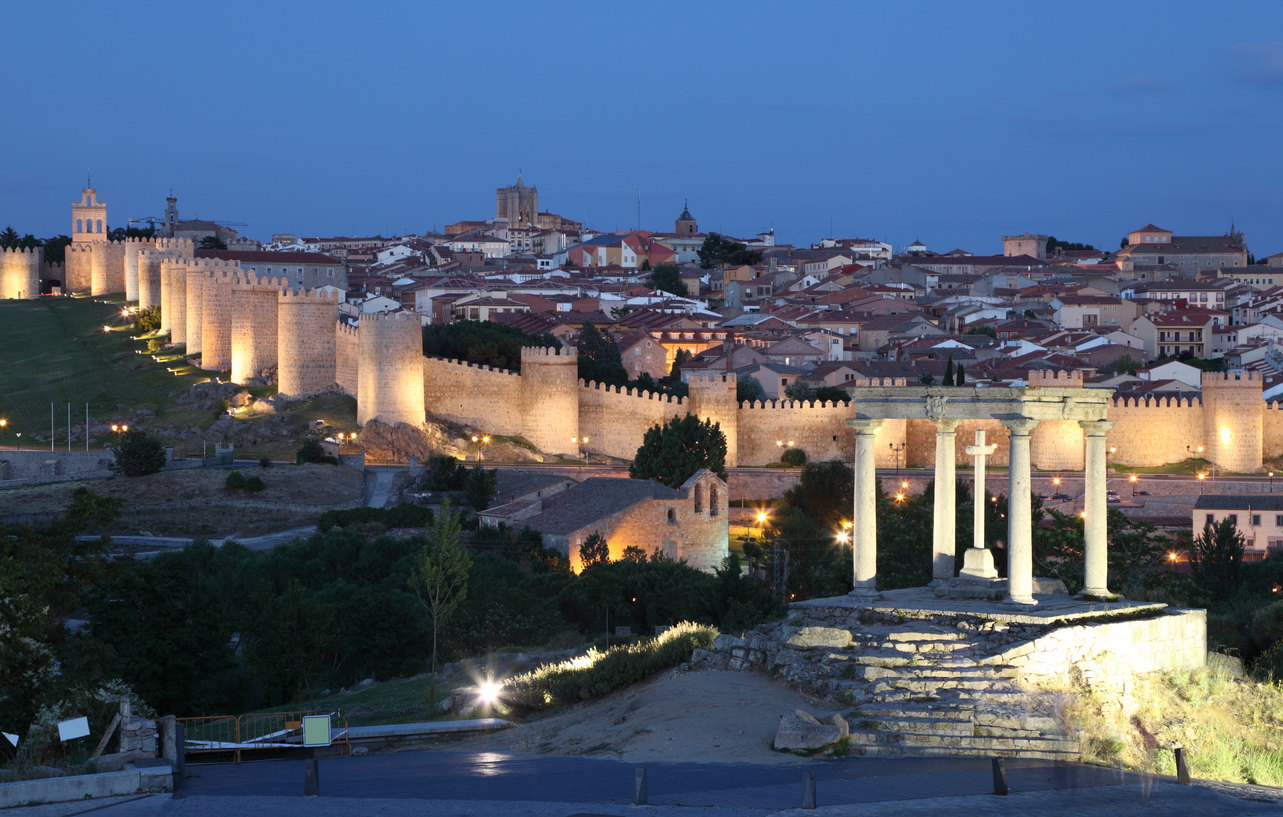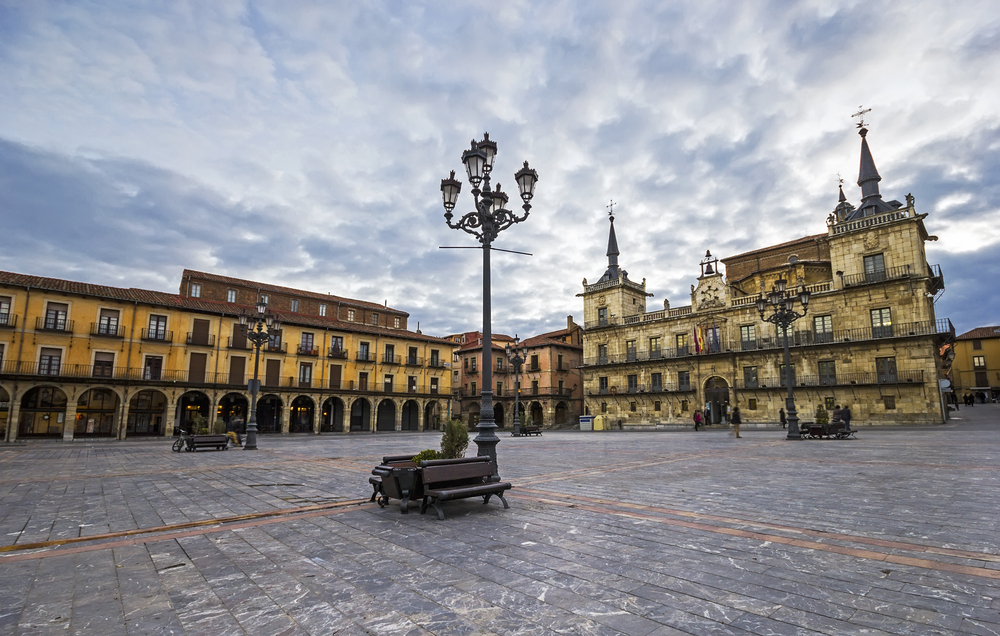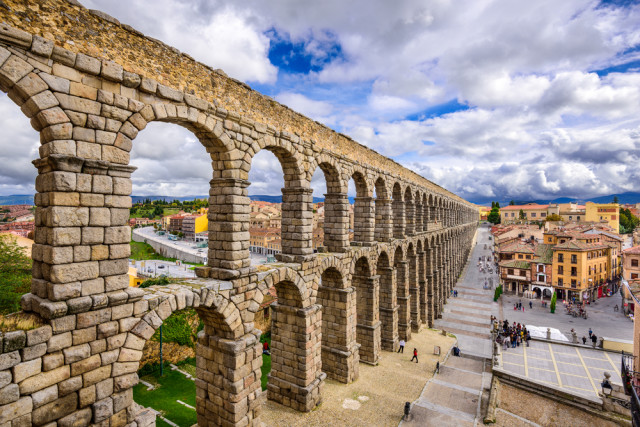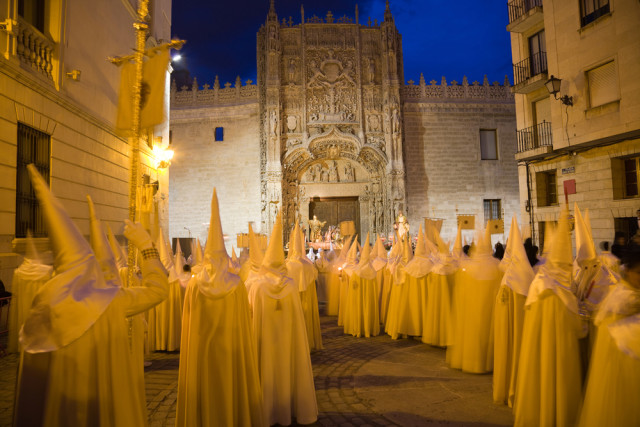
Back in the 10th and 11th centuries, León and later Castile were the first Christian kingdoms to emerge from the whittling away of Muslim rule of the Iberian Peninsula, and after uniting in 1230, became the core of Spain. Fast-forward to 1983, when under the country’s first post-Franco-dictatorship constitution the system of “autonomous regions” nine provinces were joined together in the region of Castilla y León, Spain’s largest at 94,223 square kilometres (36,380 sq. miles). And given its long, illustrious, and often tumultuous history, it’s hardly surprising that more than 60 percent of the country’s heritage sites are found here, including eight UNESCO World Heritage Sites and the world’s largest concentration of Romanesque art. And unsurprisingly, this sprawling region has also produced some distinctively tasty culinary treats.
Here are some of the highlights – more than enough to keep you coming back again and again!
 typhoonski
typhoonski
Ávila
Dating from the Bronze Age, this UNESCO World Heritage Site is best known for its massive Romanesque city walls, completely encircling the mediaeval quarter, and is home to one of my favourite ancient cathedrals, as well as many other sites. The iconic figure of “the city of stones and saints” is the mystical Carmelite nun St. Teresa.
 Camino del Cid
Camino del Cid
Burgos
This grand old city is best known for its magnificent Gothic architecture – the crown jewel of which is its soaring Cathedral of Santa María – but the surrounding province is also full of atmospheric towns and inspriring nature, with one particularly interesting site being the eight-year-old Museum of Human Evolution, also showcasing prehistory including fossils found the nearby archaeological site of Atapuerca, with tours offered of its digs and caves. Burgos’ iconic figure is locally born El Cid, whose 11h-century successes in the Christian Reconquest of Spain from the Moors transformed him into the closest thing this country has to a national hero – and of course you’ll see various monuments and references to him here!
 Sergio Gutiérrez Getino
Sergio Gutiérrez Getino
León
Founded as a Roman military camp in the 1st century BCE at the confluence of the Torío and Bernesga rivers, today it’s both spectacularly historic with its Renaissance and Romanesque landmarks and famously lively thanks to a strong student population. What most attracts visitors is its compact, UNESCO World Heritage casco antiguo (old town), especially the bit within the anicent Roman walls, including another of Spain’s most majestic cathedrals.
 Alurín
Alurín
Salamanca
Anchored by its stupendous Plaza Mayor (above), this ancient city’s UNESCO World Heritage casco viejo is not just handsome and atmospheric, but majestic in a way I have seen in few if any other cities. Its Renaissance architecture of golden sandstone gleams impressively both day and night – in the brilliant Mediterranean sunlight and then illuminated by floodlights after sundown – and its streets are lively both day and night, because this is home to one of the country’s most prestigious universities (and one of Europe’s oldest) along with myriad study-abroad and Spanish-language programs for foreign students.
 Sean Pavone
Sean Pavone
Segovia
With another UNESCO World Heritage casco viejo, this city is famous for “the Lady of Cathedrals” (one of the last Gothic to be built in Europe) but most especially for the dramatic ancient Roman aqueduct slicing through the historic centre and the fairytale Alcázar palace, dating back to at least the early 12th century and which in the early 1970s became an influence for Disneyland/Disney World‘s Cinderella Castle. The suckling pig is a local must-try classic.
 Jose Ignacio Soto
Jose Ignacio Soto
Valladolid
Settled by Celtic peoples even before the ancient Romans ruled the peninsula they called Hispania, the capital of today’s autonomous community holds a special place in the history of this entire country as the first capital of Castile, then after the game-changing “Catholic monarchs” Ferdinand and Isabella tied the knot here, also the newly united Spain. Cervantes and the notorious inquisitioner Torquemada lived here as well, and it’s where Christopher Columbus sailed off this mortal coil. Valladolid’s very walkable casco viejo is a classically impressive time capsule of a Spanish Old Town, full of grand palaces, townhouses, churches, plazas, and parks. The city’s also known for one of Spain’s most dramatic Semana Santa (Holy Week/Easter) celebrations (above).
All this is just the tip of the proverbial iceberg. C&L has three other interesting but less well known provinces, as well – Palencia, Soria, and Zamora (the first especially notable for its Romanesque architecture and the last famous for its own haunting mediaeval Semana Santa processions), along with one of Spain’s most distinguished wine regions, Ribera del Duero, with more than 30 wineries on a route winding through Segovia, Burgos, Soria, and Valladolid. So please stay tuned for more on them from us in 2019!
More info in English: TurismoCastillayLeon.com.

